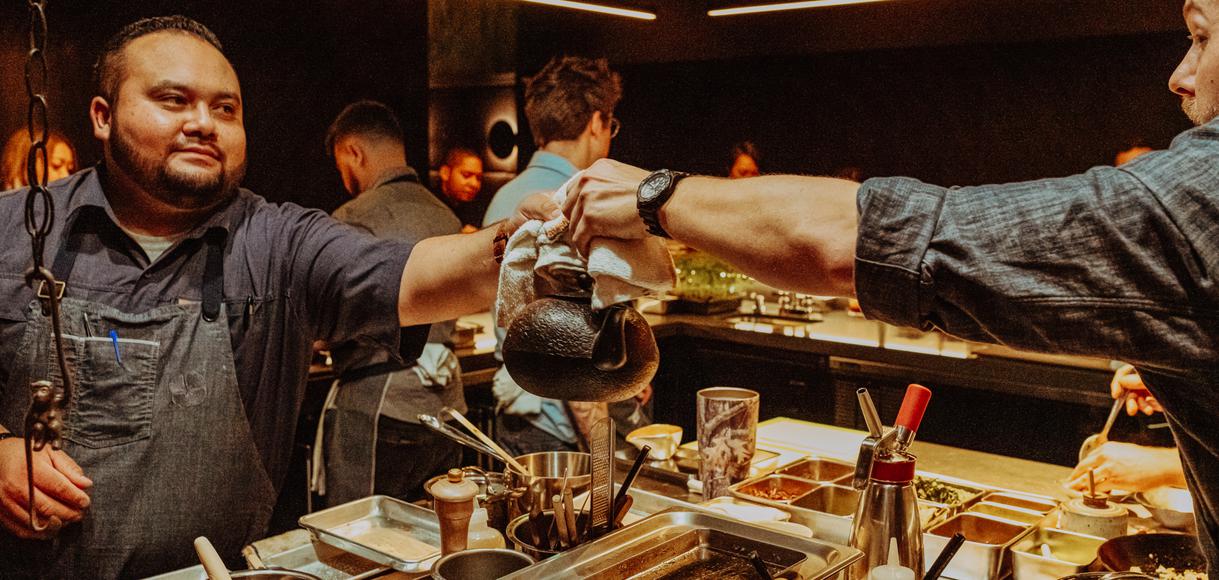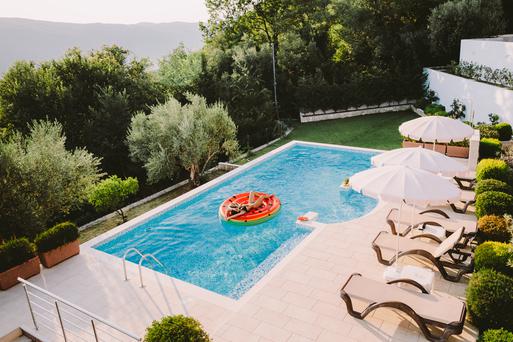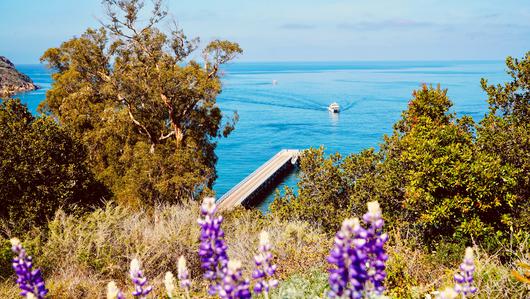This level of owner commitment bodes well for Gozu’s guests, who sit at a 25-seat, U-shaped high table that surrounds the small kitchen, the center of which features a robata-style grill that is kept aflame with imported Japanese white oak. (An additional table is tucked away at the rear of the restaurant, providing room for six to eight guests.) Kitchen activity is within arm’s reach, and questions are encouraged. Chef Zimmerman will explain the origin of the beef hanging within the adjacent meat locker. He’ll describe the carefully chosen Japanese prefecture in which the animal was raised. He can tell you what the animal ate, where it roamed, and how much it cost to purchase and import the entire animal—all 750 pounds of it—which will keep the restaurant stocked for about a month.
At Gozu, Jorgensen and Zimmerman have designed a dining concept that emphasizes a comprehensive "nose-to-tail" approach, inviting patrons to explore the full spectrum of Wagyu beef, extending beyond well-known selections such as the rib eye, New York strip, and tenderloin. Chef Zimmerman employs traditional Japanese kappo cooking methods to curate two distinct, yet straightforward and refined menus that highlight Japanese and local seafood, foraged ingredients, and, prominently, Wagyu beef, with meal prices set between $95 and $150/person.
Options for à la carte dining are also provided. Furthermore, the restaurant is committed to reducing waste through innovative practices like using bones to create charcoal, transforming Wagyu fat to cure and age various meats and vegetables, and fermenting leaner cuts to produce their signature house-made shoyu.
Zimmerman's journey in the culinary world is international in scope. He has been instrumental in opening branches of Alexander's Steakhouse in cities around the world, including San Francisco, Tokyo, and Taipei. His experience also encompasses roles at esteemed Las Vegas dining establishments like Nobu, Okada Japanese Restaurant, Social House, Restaurant Guy Savoy, and Lutèce. Holding a diploma from the Culinary Institute of America, Zimmerman, along with Jorgensen, established MZ Dining Group, paving the way for the creation of Gozu.
"Patrons who are acquainted with Marc's culinary approach before Gozu might anticipate a restaurant that focuses on generous portions of A5-grade beef," mentions Jorgensen, who brings a wealth of experience from his initial involvement with the three-Michelin-starred Single Thread in Healdsburg. "However, our gastronomic adventure at Gozu transcends the cuisine itself, integrating into the very fabric of our establishment's design, the warm hospitality we offer our guests, the advantages we provide to our team, and the dedication we apply to our technological and promotional activities."
"Every detail is crafted with purpose to create a customized experience," Jorgensen elaborates. "In recent years, our goal has been to pioneer a distinctive concept that enriches the experience for our patrons, staff, investors, and fellow entrepreneurs alike. Marc has dedicated over five years to the meticulous planning of this restaurant. Today, he's in a position to fully express his creative vision with Wagyu beef and inspire our team to explore their creativity as well."
Gozu welcomes its visitors into a sleek and understated space, with a décor dominated by shades of charcoal, directing all attention towards the culinary action in the kitchen. Upon entry, guests encounter an elegant blackened steel partition that surrounds the private dining area and the Whisky Lounge next door. This lounge offers seating for 12 and features a unique service where regulars have the option to keep their personal whisky bottles on site. For those who might prefer something other than whisky, Gozu provides an array of drink-pairing menus to suit every palate. The restaurant's beverage director, Lindsey Young, expertly assembles a variety of cocktails, wines, nihonshu (Japanese sake), and beers, each selected to perfectly pair with Gozu’s dishes.
"Wagyu is often viewed as a premium product, and here at Gozu, our aim is to present it through innovative, unique, and accessible preparations," Zimmerman explains. "We pay tribute to the entire animal by utilizing it fully. In doing this, our goal is to transform the way people think about using the whole cow, especially within the context of Wagyu."
Want to continue your San Francisco culinary explorations? Head to the new Michelin-starred ramen spot, check out the best vegan restaurants, sip artisanal coffee, enjoy rooftop bites, savor Japanese-Peruvian fare, or grab some fresh-baked SF sourdough.






